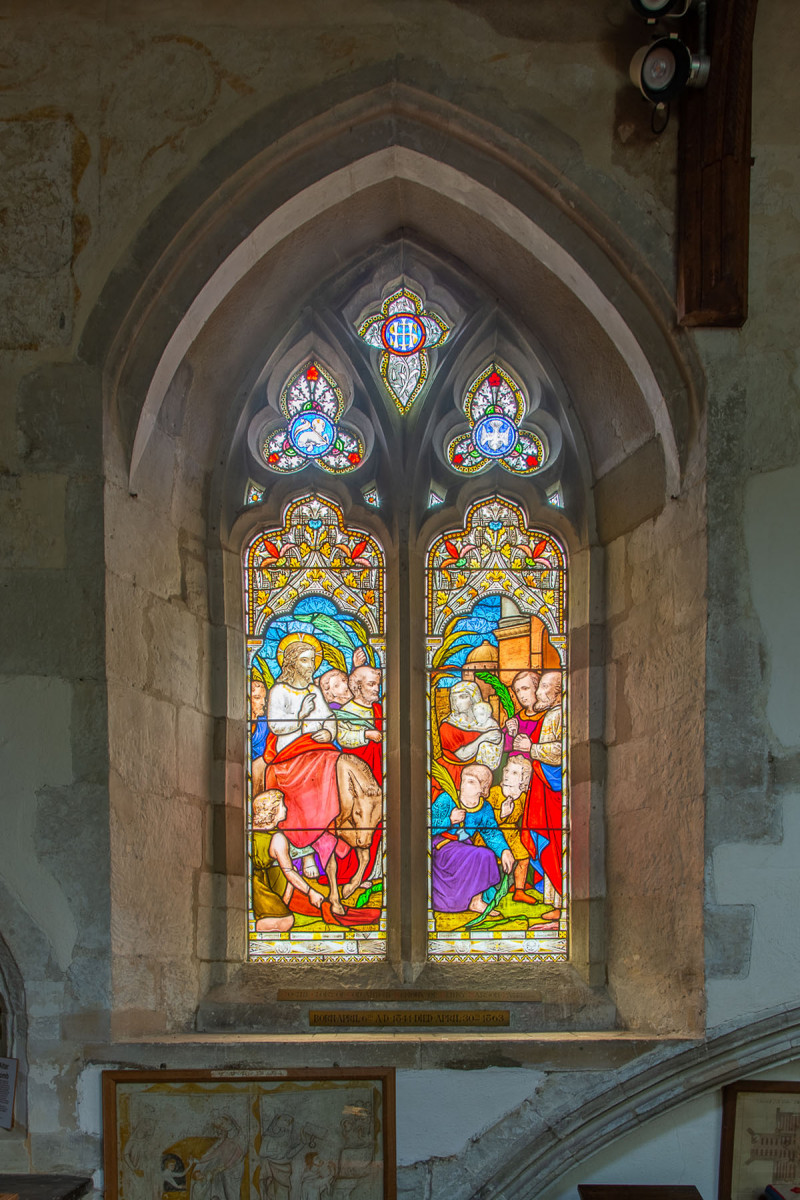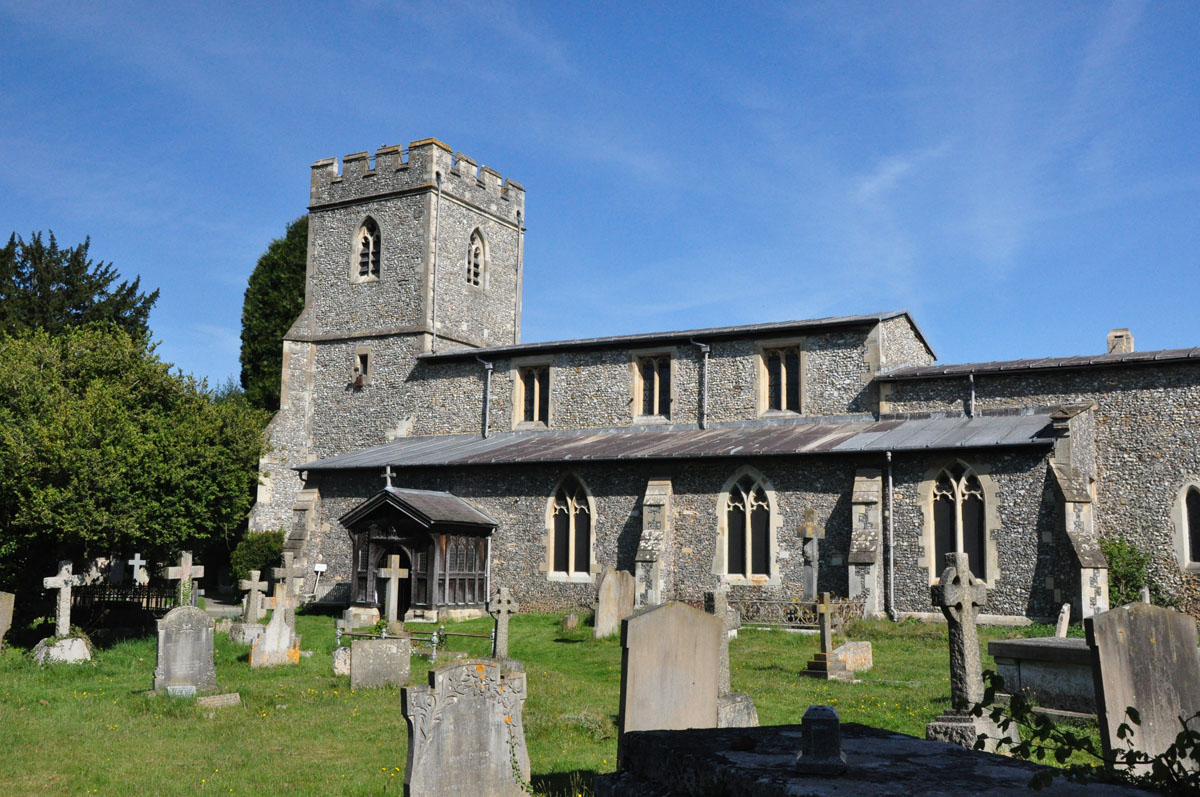About our beautiful ancient Church
The parish church of Chalfont St Giles is at the heart of the village and has been the centre of worship for over 800 years. It has many fine architectural features including many fine medieval wall paintings. It can be a quiet place for contemplation or the hub of activity for regular worshippers as well as the whole village.
History
The earliest church on the present site was built between about 1150 and 1180 (Henry II, 1154-1189) and consisted of a chancel (which was rebuilt and extended to its present length towards the end of this period), nave and south aisle, which were enlarged in the early 13th century, and a west tower, which was subsequently demolished and rebuilt farther west. From the original nave and south aisle, there remain only the bases of the pillars of the south arcade, those at the east and west ends having carved foliage at the corners; also walling on each side of the chancel arch and at the west end of the nave on the south side, the latter being part of the original west tower. A north aisle, with an arcade of two bays, was added at about the same time.
The original chancel had been, no doubt, small and square, which was the characteristic Norman type. From about the thirteenth century there was a general tendency to extend the chancels of parish churches.
The present chancel has a considerable inclination to the south, probably due to faulty orientation of the main building, with a subsequent attempt at correcting the orientation of the chancel when the latter was reconstructed.
In the early part of the fourteenth century, the nave was extended in a westerly direction and the south aisle was rebuilt and enlarged. These alterations necessitated the destruction of the tower, which was not rebuilt until about 1425. The south doorway was built about 1330 and has a moulded two-centred arch, ornamented with a series of four-leaf ornaments and ball-flowers. The east window of three lights in the chancel was probably inserted around this time.
The chancel arch dates from the early fifteenth century; some of the stones of the. arch are inscribed with masons' marks. At about the same the north aisle was widened and lengthened, and the south arcade was rebuilt, leaving only the Norman bases to the pillars. A clerestory was erected to raise the height of the nave and the nave roof renewed.
The tower was rebuilt about 1425, using some of the old material from the original tower. A blocked doorway in the north aisle is late fifteenth century and contains part of a coffin slab, on which is the head of a cross in relief.
 There was an extensive re-ordering/restoration in 1860 involving the building of a vestry on the North side of the chancel (replaced with the present one in 1955) replacement of the pews, and the installation of a heating system. The tower was restored and raised, and the battlements rebuilt. In 1884 an organ chamber (together with a new organ) was added at the east end of the south aisle. The south porch was erected in 1895, replacing one which had fallen into disrepair and had been removed in 1760.
There was an extensive re-ordering/restoration in 1860 involving the building of a vestry on the North side of the chancel (replaced with the present one in 1955) replacement of the pews, and the installation of a heating system. The tower was restored and raised, and the battlements rebuilt. In 1884 an organ chamber (together with a new organ) was added at the east end of the south aisle. The south porch was erected in 1895, replacing one which had fallen into disrepair and had been removed in 1760.
The roofs of the chancel, north and south aisles all date from the 1950’s all having had to be replaced because of death watch beetle damage. The current heating system is modern (installed in 2000), the church was rewired in 2006, a modern projection system installed in 2009 and a toilet and servery in 2015.
The stained glass in the windows is largely Victorian (including some by well known makers) although there are remnants of mediaeval glass in the tops of some of the windows.
The church is well known for its 14th century wall paintings in the South Aisle and Chancel and also has a number of brasses dating from about the same time. There are also a number of hatchments, which were paintings of the coat of arms of someone who had died, and which were displayed outside their home for three months or so after the death.
On the North side of the chancel there is the tomb of Thomas Fleetwood and his two wives and eighteen children (four by the first and fourteen by the second!) and who died (worn out probably) in 1570.
